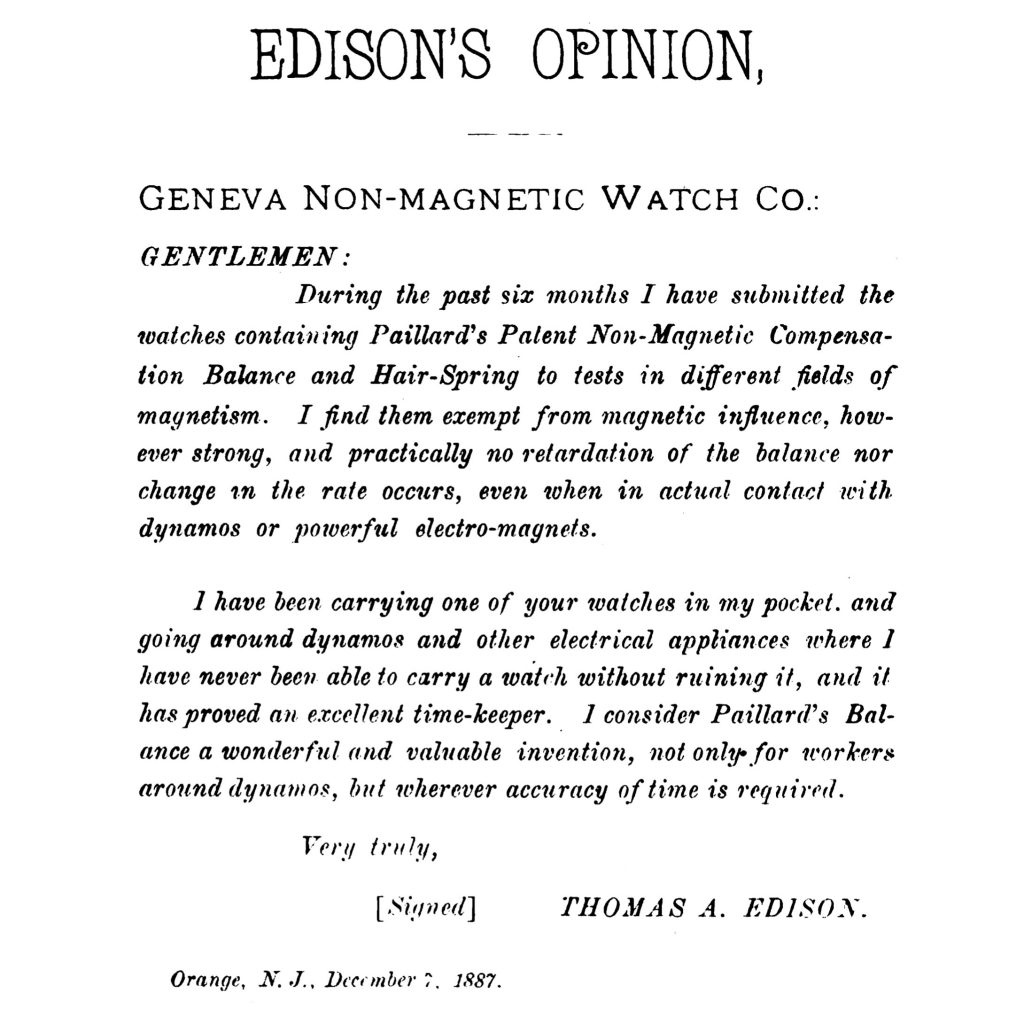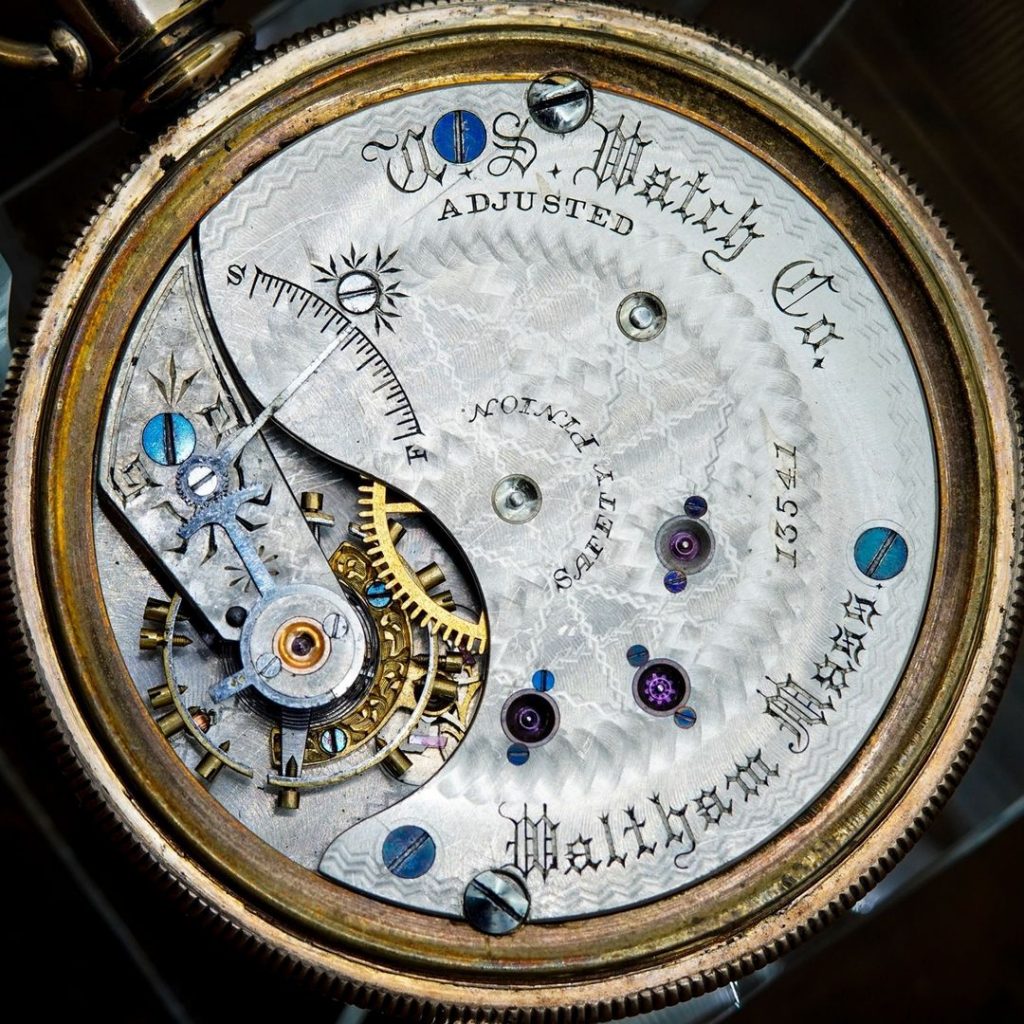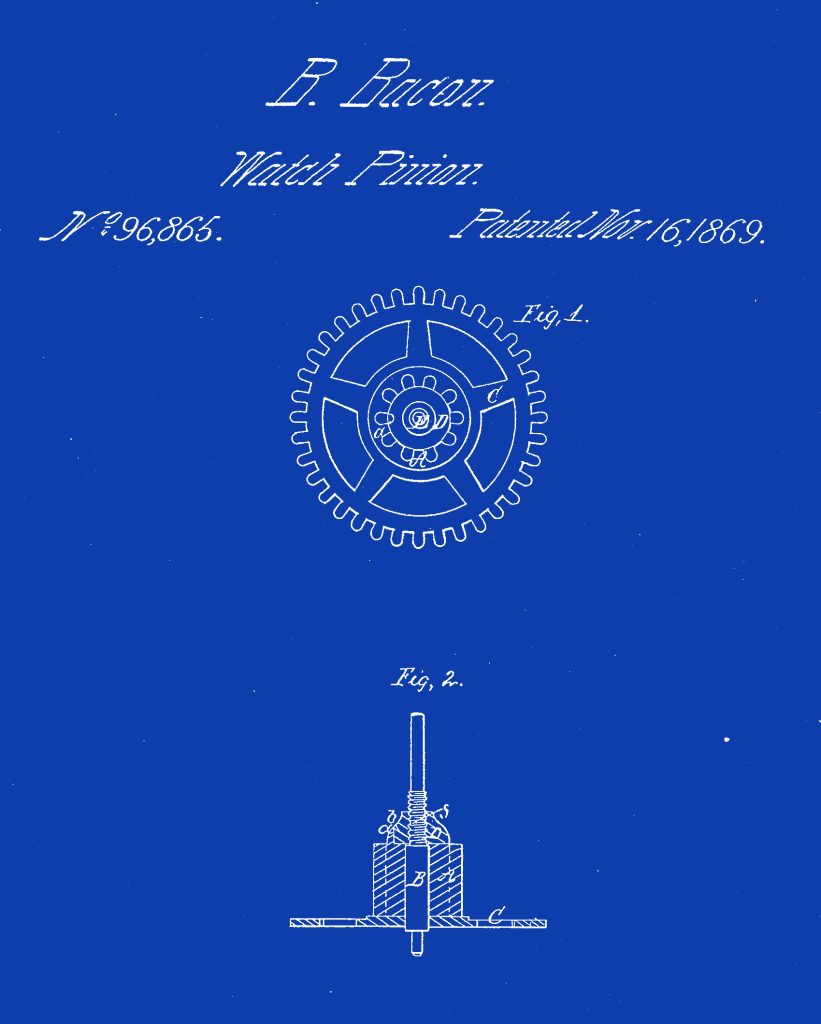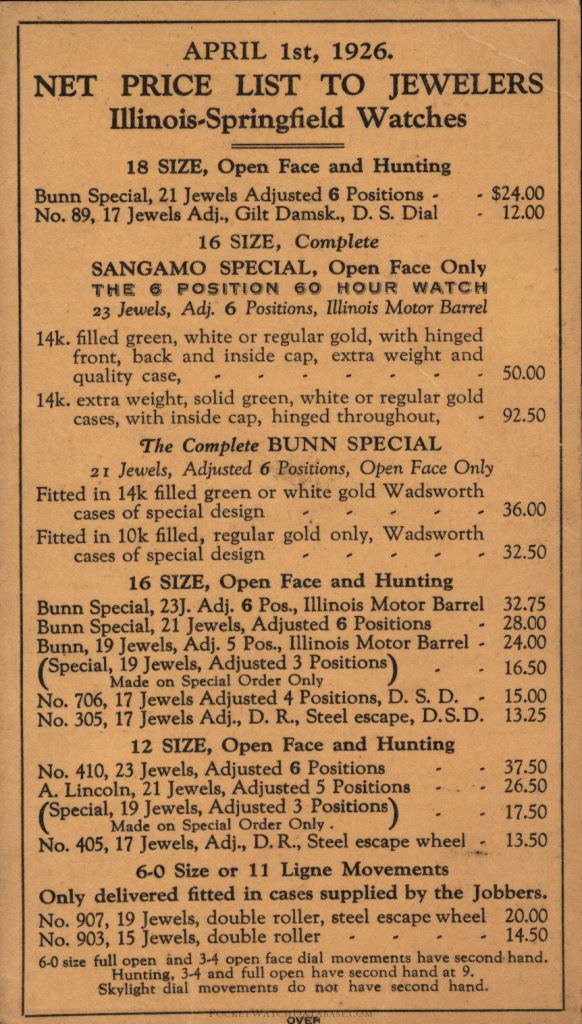Private Label Trade Names on American Pocket Watches: The Non-Magnetic Watch Company: Part 22: Edison’s Endorsement

The American Waltham Watch Company introduced a non-magnetic watch to compete with the Non-Magnetic Watch Company in December 1887, igniting a marketing rivalry between the two companies.
Being a small company in comparison, the Non-Magnetic Watch Company needed an enormous counterplay to combat Waltham’s advertising that lauded their watch as the first and only American non-magnetic watch.
In August 1887, the Geneva Non-Magnetic Watch Company exhibited their watches at Philadelphia’s National Electric Light Convention. Demonstrations were conducted to showcase the non-magnetic properties of the watches, receiving favorable attention. The Electrical Review reported:
“This innovation has met a long-felt want among those whose occupation takes them among dynamos or other electrical appliances as well as by the public, and as the use of all makeshifts are dispensed with, these movements fitting regular cases, they would seem to be the watch of the future.”The Electrical Review
The promise of immunity to electromagnetism caught the attention of Thomas Edison, who would benefit immensely from the non-magnetic properties in his constant work around large dynamos and direct current electricity.
In December 1887, shortly after the National Electric Light Convention, the Non-Magnetic Watch Company received an endorsement from the great inventor, representing a remarkable achievement for the young company and arguably the most influential support imaginable.
Edison’s endorsement was proudly published in trade publications to promote the Non-Magnetic Watch Company during the introduction of Waltham’s non-magnetic watch.
“Edison’s Opinion
Geneva Non-Magnetic Watch Co.:
Gentlemen:
During the past six months I have submitted the watches containing Paillard’s Patent Non-Magnetic Compensation Balance and Hair-Spring to tests in different fields of magnetism. I find them exempt from magnetic influence, however strong, and practically no retardation of the balance nor change in the rate occurs, even when in actual contact with dynamos or powerful electro-magnets.
I have been carrying one of your watches in my pocket, and going around dynamos and other electrical appliances where I have never been able to carry a watch without ruining it, and it has proved an excellent time-keeper. I consider Paillard’s Balance a wonderful and valuable invention, not only for workers around dynamos, but wherever accuracy of time is required.
Very truly, Thomas A. Edison.
Orange, N.J., December 7, 1887.”Thomas Edison’s Endorsement of the Non-Magnetic Watch Co., Locomotive Engineers’ Monthly Journal, February 1888.



